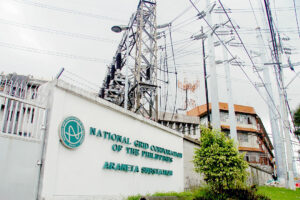NGCP defends higher transmission rate for September
THE NATIONAL Grid Corp. of the Philippines (NGCP) said the increase in transmission rates, which is part of the monthly electricity bill for September, was due to higher ancillary services (AS) following the resumption of the reserve market. In a statement on Thursday, the grid operator said it did not earn nor benefit from the […]

THE NATIONAL Grid Corp. of the Philippines (NGCP) said the increase in transmission rates, which is part of the monthly electricity bill for September, was due to higher ancillary services (AS) following the resumption of the reserve market.
In a statement on Thursday, the grid operator said it did not earn nor benefit from the increase in ancillary services — part of the transmission rate — as these are pass-through costs and are collected for generation companies.
“NGCP clarifies that while consumers may notice an increase in transmission charges, this is a result of the resumption of the AS (ancillary service) Reserve Market,” the company said.
“In compliance with directives from the Department of Energy and the Energy Regulatory Commission (ERC), NGCP contracts 50% of its AS requirement from firm agreements and 50% from the AS Reserve Market,” it added.
In fact, the transmission wheeling rate, or what NGCP charges for its primary service of delivering power, dropped by 5.5% to P0.4761 per kilowatt-hour (kWh) in the August supply period from P0.5038 per kWh previously.
“As regards the transmission wheeling rates, we are under a revenue cap. So for the year, [the charges] that go to NGCP will not increase nor decrease. It’s just divided into 12 months,” NGCP Spokesperson Cynthia P. Alabanza said at a briefing.
Meanwhile, ancillary service rates for the August supply period rose by 125.92% to P0.6127 per kWh from P0.2712 per kWh previously. These are sourced from the reserve market which resumed on Aug. 5.
Ancillary services are deployed by grid operators to support the transmission of power from generators to consumers to maintain reliable operations. These are pass-through charges billed by the grid operator and remitted directly to generation companies.
In January, the Independent Electricity Market Operator of the Philippines (IEMOP) commenced the full commercial operations of the reserve market.
The reserve market allows the system operator to procure power reserves from the Wholesale Electricity Spot Market, the trading floor of electricity, to meet the reserve requirements of the energy system.
The ERC issued a suspension order in March after the IEMOP observed a significant increase in reserve costs for March compared to February.
Earlier, Manila Electric Co. announced an increase in electricity rates for September due to a higher transmission charge, which increased by P0.2913 per kWh. — Sheldeen Joy Talavera























